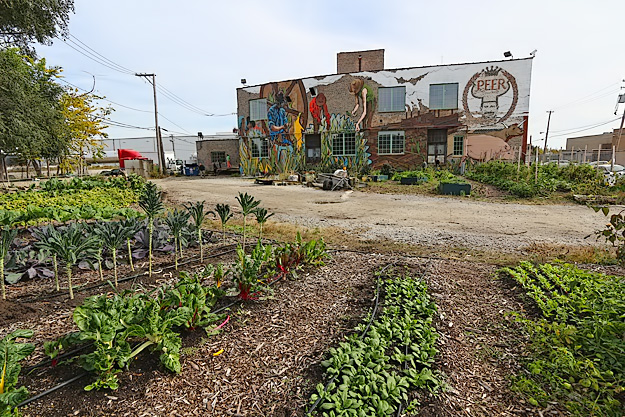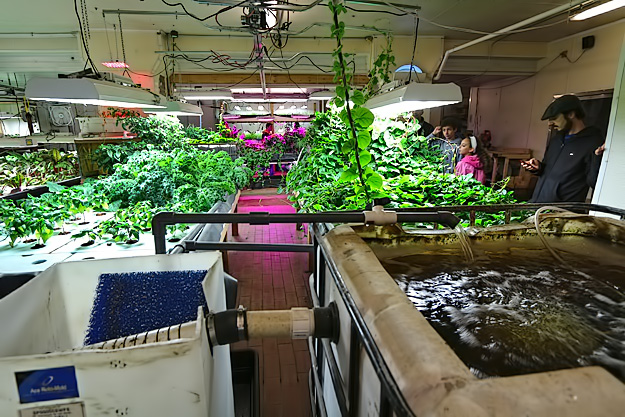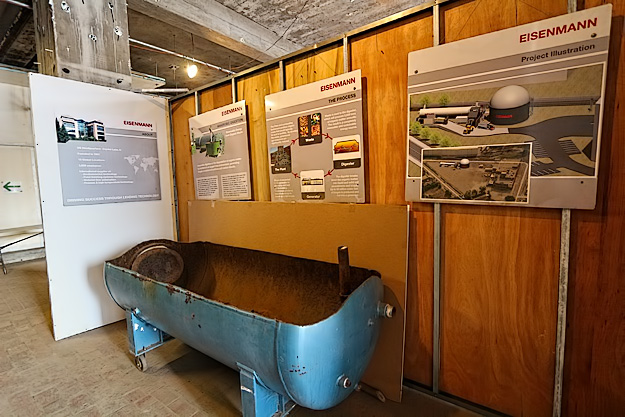I can’t count the number of times I’ve looked at a building in Chicago and wondered about its history or wished I could see inside. Fortunately, one weekend each year, the Chicago Architecture Foundation makes that possible during Open House Chicago, a citywide architectural festival that offers free, behind-the-scenes access to more than 150 buildings around the city.
With so many intriguing buildings on display, choosing which one to visit was the most difficult part. I was tempted by famous downtown skyscrapers like the Tribune Tower, properties such as the Frank Lloyd Wright mansion, and a handful of historic theaters. But in the end, I opted for a more obscure building in the Bridgeport/Back of the Yards neighborhood on Chicago’s southwest side.
As I was born and raised on the south side of Chicago, Back of the Yards is more than a name to me. The neighborhood was named for the infamous Union Stock Yards, which in my youth was the largest livestock processing and distribution facility in the world. As a teenager, my father worked at the Stock Yards as an apprentice electrician. By the time I came along, the meat packing industry was winding down, but it was still active enough that the sickly smell of raw meat reached my nostrils on days when the wind blew just right.

In recent years, this part of the south side has experienced a resurgence. Bridgeport has attracted art galleries and coffee shops, while many of the old brick factories in the adjacent Back of the Yards neighborhood are being repurposed for cutting-edge sustainable technology. One of these, the former 93,500 square-foot Peer Food Products pork packing plant, piqued my interest. After its closure in 2006, the building stood empty and deteriorating until it was purchased by John Edel in 2010. Rather than tearing it down, Edel’s vision was to create a sustainable food operation in a “food desert” – an area of the city where fresh, nutritious food was especially hard to obtain. The result was “The Plant,” the city’s first vertical urban farm and food-business incubator.

The heart of The Plant is a non-profit Community Supported Agriculture operation, the first licensed aquaponic plant in Chicago. Huge grow lights hang over a variety of self-pollinating vegetables such as spinach, kale, lemongrass, and peppers. Purple LED lights are used because they produce the red and blue spectrum that plants require for photosynthesis. None of the light is reflected, thus every kilowatt of energy is used by plants. Expanded clay pellets placed around the base of the plants makes it easier for roots to find their way down to water, which is piped in from adjacent tanks where Tilapia swim. The Tilapia produce ammonia and solid waste. After settling out of the solids, the remaining ammonia rich water is sent thru a bio-filter, producing nitrate-rich water that feeds the plants, creating an efficient, closed-loop system.

Area residents pay a $750 upfront, which allows the farmers who run the co-op to buy their seeds and materials at the beginning of the season. In return for their investment, each co-op member receives a prearranged amount of produce worth about $35 per week, which feeds a family of four each week from April through November. In an area of the city devoid of grocery stores or farmers markets, The Plant has become a vital cog in the struggle to provide access to healthy food for low-income families.
The top floor of The Plant is already home to three bakeries and a Kambucha tea maker, and a cheese distributor and a brewery will soon be added to the mix. Waste from the hops used by the brewery will be turned into bricks that will fire the bakery ovens. Also slated for completion in 2015 is an anaerobic digester. As with everything else in the facility, the digester will be a closed-loop system that adds no waste to the environment. It breaks down organic matter into soil amendments and up to 29 million cubic feet of biogas, which is fed into a generator and converted into electricity and heat for the building.

The digester will handle organic plant waste, grains from brewery, and waste from local restaurants that currently are required to haul their organic waste to landfills in far away Geneva or St. Charles. Not only will these restaurants save on landfill and transportation cost, selling the excess capacity of the digester will lower the per kilowatt cost of electricity for The Plant, a savings that will be passed on in the form of lower prices for produce sold to the restaurants.
Touring The Plant gave me hope that someday, all our homes will be equipped with systems to recycle waste and lower our energy cost, and that through the efforts of visionaries like John Edel, we will find solutions to provide much needed nutrition to those less fortunate.
The Plant is located at 1400 West 46th Street in Chicago. Tours are conducted every Saturday at 2 p.m. The 60 minute in-depth tour addresses everything from aquaponic farming to creating your own renewable energy. Tickets cost $10 per person. Alternatively, plan to visit for free during the next Open House Chicago, scheduled for October 17-18, 2015

Nice to see the South Side being reborn into something that will drive the future … great post!
Agreed, Adam. And long overdue!
Great article, Barbara! I used to live in the South Loop area many, many moons ago. Am so glad there has been so much development the the past years. Yes, we need more sustainable projects. Hope this one will be a blueprint for other cities.
Hi Paula: Never knew you lived in Chicago. The Back of the Yards neighborhood has a long way to go but it’s getting there, slowly, which is great to see.
Hi Barb, very enjoyable article. It would be so nice to see more of this across the U.S.
Hope you are doing well
Carla
Hi Carla! How wonderful to hear from you. I’m hanging in there, though not so happy to be in Illinois through the winter. I’m headed down to Atlanta in a week or so – maybe we can get together.